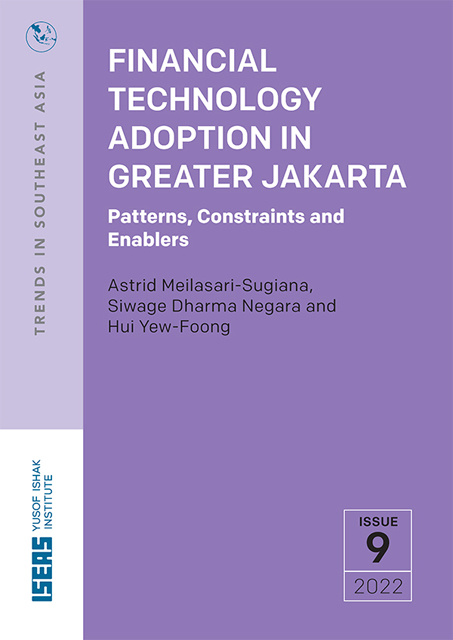Appendix: A Logistic Model for Fintech Adoption
Published online by Cambridge University Press: 01 September 2023
Summary
This section analyses the relationship between the usage of a particular fintech app and individual user socioeconomic and psychological factors. We use logistic regression to empirically verify the factors affecting personal decisions to use fintech. Table A1 shows a list of dichotomous dependent variables used in the model. Y1–Y5 are dependent variables concerning usage of different fintech platforms, i.e., M-banking, E-wallet, lending, investment, and donation. Y6–Y7 are dependent variables concerning fintech usage for social activities and expanding one’s network. Finally, Y8–Y9 are dependent variables concerning one’s perception of data security and fraud related to fintech usage.Table A2 shows a list of independent variables used in the estimation. It covers individual-specific characteristics such as age, gender, income, job type, and residential area. It also covers some psychological factors, such as feeling in control, being afraid of data leaks or fraud, and being worried about being extravagant or trapped in unsustainable debt, among others.Overall, the estimation results show that having many choices for the needed financial services (KAT_CHOICE) and feeling in control (KAT_ TAKE_CONTROL) make people like to use various types of fintech applications. These variables are statistically significant and positive in all model estimations (Table A3).Table A3 shows that men tend to like investment apps, while women tend to like E-wallet and lending apps (KAT_GENDER). Younger people (Generations Y and Z) tend to like E-wallet and investment apps (KAT_ AGE). Those with higher education (post senior high school) tend to use fintech more, especially M-banking, investment apps and donation apps (KAT_EDUC), compared to those with lower education. And people who have full-time jobs tend to like fintech, i.e., M-banking and investment apps (KAT_JOB). Finally, lower-income groups tend to like E-wallet apps (KAT_SES), while the higher income groups tend to like M-banking apps.Location variable (KAT_AREA) stands out as significant in all estimations (Table A3). It shows that those living in the Jabodetabek area have a higher probability of using fintech platforms than those outside Jabodetabek. Later we re-estimate the model using the Jabodetabek sample to check the robustness of the estimation results.Table A4 indicates that fintech use is not associated with expanding social networks (KAT_BROADEN NETWORK). However, people who use fintech for social activities (KAT_SOCIAL_ACT) tend to install E-wallet, donation and investment apps.
- Type
- Chapter
- Information
- Financial Technology Adoption in Greater JakartaPatterns, Constraints and Enablers, pp. 43 - 53Publisher: ISEAS–Yusof Ishak InstituteFirst published in: 2023



